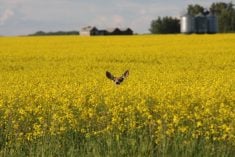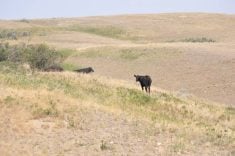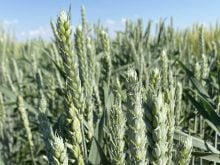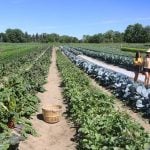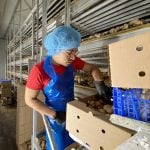LA CRETE, Alta. – Alberta’s oldest farming communities are about to become its newest farming area with the opening up of 850 quarter sections of land for agriculture.
A land swap agreement with the provincial government will result in the sale of 136,000 acres of land for agricultural purposes in Mackenzie County near High Level, Fort Vermilion and La Crete over the next few years.
This spring, 266 quarters of bush-covered land near La Crete sold for $15,725 to $125,000 per quarter.
It’s estimated the land sales will increase the county’s arable acres by 30 percent from 500,000 to 636,000 acres.
Read Also
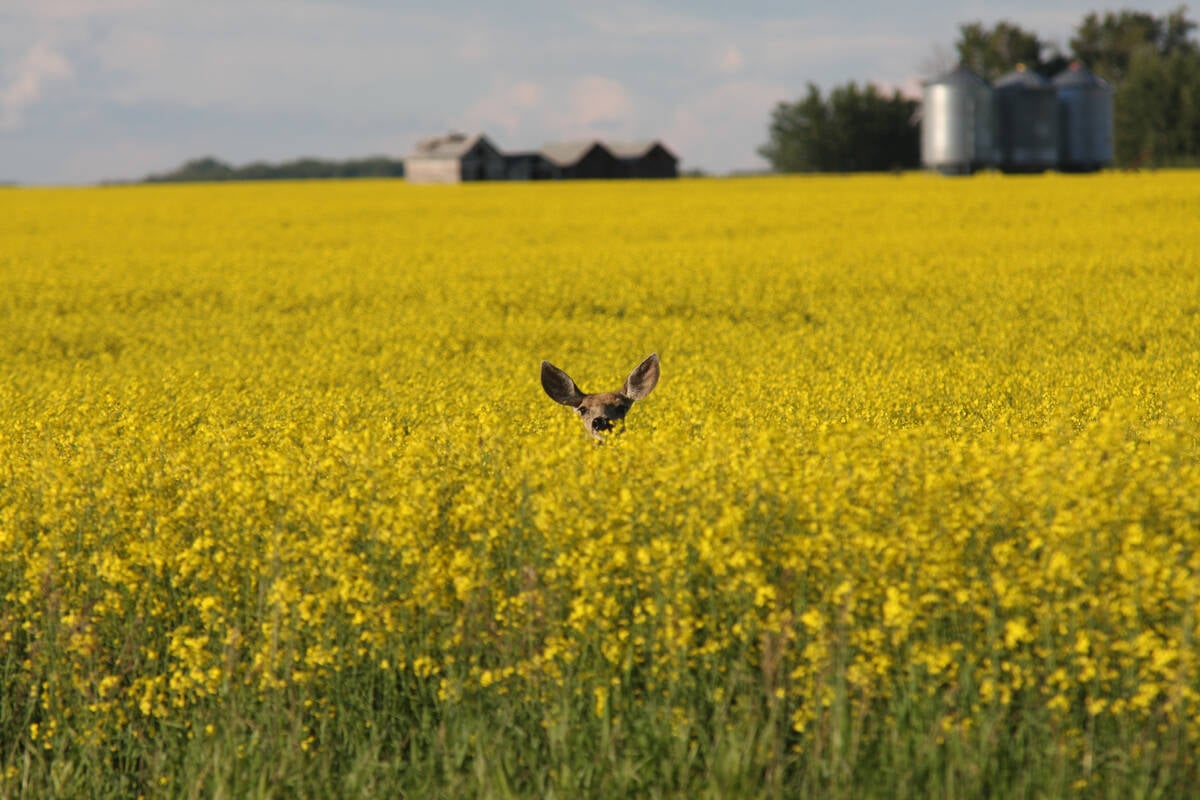
Drones now used to assess wildlife crop damage in Saskatchewan
Wildlife damage in Saskatchewan crops is now assessed by drones and artificial intelligence.
“There is a huge demand for land,” said Dicky Driedger, chair of Mackenzie County’s government land sale committee.
“If the sales hadn’t gone forward, land prices would have skyrocketed.… The sales haven’t depressed land prices, just stabilized them and stopped them from going up.”
Demand for farmland is increasing in the province’s largest and most northerly county, and officials hope the land sales will allow existing farmers to expand and young farmers to begin, creating a mini economic boom in northern Alberta.
“People have a yearning to be farmers,” said Driedger, who started farming on a three-quarter homestead near Tompkins Landing, Alta., in 1985.
“We have a big population and more kids want to farm with their dads.”
The area around La Crete, where the first phase of the land sales took place between January and April, has a large Mennonite population with large families and a close connection to the land.
The area has also seen a large influx of Mennonite families returning to La Crete from Bolivia in recent years.
The town’s population has doubled to 2,000 since 1995 and serves a surrounding area of 7,000 residents.
The existing farmland was too expensive for the newly returned families. A quarter of land just outside La Crete sold for $230,000 a year ago.
Danny Friesen, co-owner of Peace Country Auctioneers, which was hired to sell the farmland, said the auction has given the community a new energy. Farmers who couldn’t buy land were moving away to find available farmland.
“The Mennonite people want to live on the farm,” said Friesen, who at 24 farms 12 quarters of land.
“In no other community would people be willing to work that hard and break new land.”
Simon Driedger bought seven quarters of land six kilometres from his existing 900-acre farm north of La Crete. It’s only the second year he has farmed, but the trucking company owner hopes the additional acres will turn his farm into a full-time, viable business.
He paid an average $70,000 per quarter and plans to start clearing trees this winter.
“This is a community builder, an opportunity,” said Driedger, who believes the land sales will bring significant spin-off benefits for farmers, the town and local businesses.
“This gives the young people a huge opportunity to stay here and farm. The people want to farm.… It’s a golden opportunity for young people.”
Abe Giesbrecht, 19, bought two quarters of land during the February sale and has started clearing the bush from one of them. He hopes to plant a crop next spring.
Giesbrecht paid $44,000 and $46,000 for his quarters.
For Giesbrecht, who recently moved from Bolivia, it was the only chance he would have to start farming.
“I was very glad they gave everyone an opportunity to get some land,” said Giesbrecht.
“I wanted to buy the land so I can work at home more. I never figured I’d get this opportunity.”
Giesbrecht has previously worked in Grande Prairie and Cold Lake during the winter, hours away from his new home in La Crete. But the mini land boom has also created a mini work boom, which will allow Giesbrecht to spend more time in the northern Alberta community.
Henry Loewen moved from Bolivia in 1999 and it hasn’t been easy restarting his life in La Crete.
“I had to start from scratch. It’s been a little bit tough, but the future looks good,” said Loewen, who upgraded his English and got his welding ticket.
The land boom encouraged Loewen to start manufacturing land clearing equipment in between his regular business of repairing logging equipment and building hopper bottoms for grain bins.
“We learned quite a bit about building everything ourselves in Bolivia. There wasn’t much available in Bolivia,” said Loewen, who believes the land sales will create a new source of revenue making brush cutters, pil- ers and land plows.
The Mennonites’ closeness to the land and desire to farm is the reason for the large settlement in the far north of Alberta’s Peace River region. The first Mennonites moved from Saskatchewan to La Crete in the 1930s in search for better land. They also wanted to escape the worldliness of the developing world.
“We have farming in our blood,” said Jake Driedger, who believes the land sales will allow families to make a living farming at La Crete.
“We want our young people to have a start on the land,” he said.
For La Crete businessperson George Janzen, the land sales have given him a chance to call himself a farmer.
Janzen has tried to be a farmer since he was 18 when he put his name in homestead draws for the opportunity to farm.
“Now, 30 years later is my chance.” Janzen bought 23 quarters of land and convinced two of his three sons-in- law to buy land in the land auction.
He’s already hired contractors to start the long and difficult process of clearing land. He hopes to be farming on 17 of his 23 quarters within five years.
“I still think land is a good investment. Land gives the community a more stable base.”


